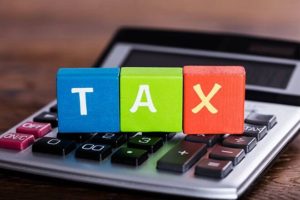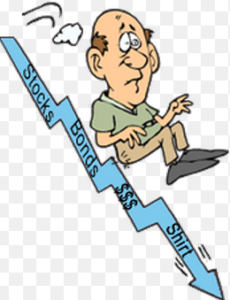August 22, 2020
 The analysis and management of personal and business finances is the most important thing to keep things in order and on track.
The analysis and management of personal and business finances is the most important thing to keep things in order and on track.
If you are looking to maximize your return and reduce your tax liability then what is it you are waiting for? You should start working to improve your financial management and tax management situation immediately if you wish to stay organized!
This is exactly what Tax Planning and tax management is! Yes, it is the fact that the rules and regulations of taxation are complex but once you get the hang of it then it’s quite easy.
It is often said that they don’t teach you how to manage your taxes in college and it is indeed true to some extent. But you do not need to worry anymore because we have got your back this time like you always do!
If you learn and understand the rules and regulations of taxation then you can utilize them according to your advantages and then it will be up to you how much you will be paying!
So before you make your next monetary move, make sure that you check out the taxation strategies given to you by us!
In this article, we are going to discuss 6 Tax Planning tips in order to maximize your return!
So, keep on reading to find out more information below about tax management.
1. Comprehend The Tax Bracket:
The first thing that you need to know is what kind of tax bracket you are in. There is a system called the progressive tax system according to which the people having higher income pay more taxes. On the other hand, people having low income, pay less tax.
The federal Income Tax brackets are 7 in number which are 10%, 12%, 22%, 24%, 32%, 35%, and 37%.
2. Tax Deduction And Tax Credits:
Tax deductions are some particular expenses that you have to reimburse, and you can minus these from your income.
Tax deductions lessen the amount of tax that has to be paid on your income.
On the other hand, tax credits are ideal because they provide you a dollar for dollar reduction in your bill.
3. Standard Deduction And Itemizing:
Amazon part of tax management involves determining if you want to take a standard deduction or itemizing.
A lot of pairs of tax choose standard deduction because it is way faster as compared to itemizing. The standard deduction that you will be able to receive is dependent on the status of your filing.
If someone itemized deductions are more than the standard deductions then they will have to choose to itemize. The IRS Schedule A is utilized to contend the itemized deductions.
4. Be Up To Date:
For appropriate tax management, it is important to always be up to date about the possible deductions and credits out there!
5. Tax Records:
You should keep your tax records for at least three years. but in certain cases, you have to keep the records for even longer!
6. Taxation Strategies:
You can maximize your return in tax management by adopting other tax strategies, such as W-4, 401(k), putting money in IRA.
Tags:
Business,
economy,
financial planning,
investments,
money,
Retirement,
tax,
Tax Management
February 6, 2020
 You’re never too young to plan for retirement. In today’s busy world, however, developing a retirement plan can be quite daunting. Fortunately, many financial resources make it possible for people to plan for their retirement early enough. Generally, these tools come with advice, great benefits, goals, and progress reports, all at your fingertips.
You’re never too young to plan for retirement. In today’s busy world, however, developing a retirement plan can be quite daunting. Fortunately, many financial resources make it possible for people to plan for their retirement early enough. Generally, these tools come with advice, great benefits, goals, and progress reports, all at your fingertips.
Plan Your Retirement
Retirement planning is simply the process of determining income goals in retirement and the necessary steps to achieve this. This part is important because it inspires you to take charge of your finances.
Knowing exactly what’s draining your purse is vital to planning your retirement. If you’re not sure of what’s emptying your account, what you have left, and at what level of saving you should be for your planned retirement, then you may need digital apps to help you budget and plan accordingly.
Determine A Good Amount For Retirement
When it comes to saving for your retirement, asking a stranger how much is the right amount is like asking a Londoner how much it costs to commute from Chicago to New York. He/she would more than likely reply with some follow-up questions such as “Will you drive or fly?” and “Where are you now?”
In the same vein, when it comes to how much you need to save for retirement, you need to put some things into consideration for effective planning, including:
• Your current financial status.
• Your anticipated retirement lifestyle.
• How much you stand to collect from social security?
• When do you plan to retire?
• Your investment options.
For early retirement, some financial planning experts suggest between 10-15% of your current income. Whether you’re pursuing early retirement or not, the best way to determine your savings level is to create a retirement limit plan and to do the math to see if you’re still on course.
The rule of thumb is that after you’ve calculated what you believe you possibly need during retirement, multiply the amount by 25. For instance, if the amount is $20,000 per annum, you’ll need 25 × 20,000 = $500,000 to retire comfortably. In contrast, if you’ll receive a $5,000 annual pension and another $5,000 in Social Security benefits, you’ll need only half of the $20,000 per year from your savings account. Therefore, you’ll need just $250,000 saved, which is a good amount for retirement.
Set A Guide For Your Retirement
The majority of the news about retirement nowadays is negative – you may have to work longer because Social Security won’t be enough to save you, and with a longer life span, your savings may not last. This sad commentary may spur you to give up and abandon your retirement goals. But, this approach is likely to complicate things in the long run.
The truth is that having an hitch-free retirement isn’t all about being wealthy, but more about investing your assets wisely. The steps you need to consider in formulating an effective retirement strategy include:
1. Setting your retirement goals to include what you wish to achieve and your financial needs.
2. Creating a financial retirement budget to achieve your objectives.
3. Getting online help from professional financial planners, counselors, financial institutions, and digital applications that could help transform your funds into investment vehicles for a financially stable retirement.
Conclusion
Now you’ve got one or two tips to set you up on the way to plan efficiently for your retirement without hiccups. If you’re finding it difficult to draw a proper retirement plan, consider hiring a financial advisor to help you outline your retirement plan and guide you accordingly.
You may also try out digital apps that are sometimes free to use and quite efficient.
However, for those who are not so tech-savvy, selecting the best apps to help plan your retirement early could be difficult since not much information is provided about them in the popular app stores. To this end, we compiled a list of the best applications to help you plan for your retirement.
Apps to help go into early retirement.
While going through the list, you’ll find many useful apps with unparalleled features for your benefits.
Tags:
budgeting,
economy,
Financial Assistance,
investments,
money,
personal finance,
Retirement,
Retirement Planning,
savings
January 12, 2019
 There are several retirees who are of the opinion that they won’t be able to obtain a loan just because they don’t get a salary any longer. Although it is true that it can be tougher to qualify for loans during retirement, yet it is not at all impossible. You must have been saving in your retirement accounts like your Roth IRA or 401(k) accounts but something that you should avoid is borrowing from these accounts. This can have an adverse impact on your savings and also on the income that you fall back on during your retirement. There are several kinds of online loans and offline ones which can save you from a financial setback even during retirement. Read on to know more on this.
There are several retirees who are of the opinion that they won’t be able to obtain a loan just because they don’t get a salary any longer. Although it is true that it can be tougher to qualify for loans during retirement, yet it is not at all impossible. You must have been saving in your retirement accounts like your Roth IRA or 401(k) accounts but something that you should avoid is borrowing from these accounts. This can have an adverse impact on your savings and also on the income that you fall back on during your retirement. There are several kinds of online loans and offline ones which can save you from a financial setback even during retirement. Read on to know more on this.
Borrowing during retirement – How do you qualify?
When you’re self-funded, lenders will typically decide the monthly income utilizing 2 different procedures which are as follows:
- Asset depletion: In this technique, the lender will subtract the down payment from the entire and sum total of the value of your fiscal assets and then take 70% of the remainder amount and then divide by 360 months.
- Drawdown of assets: The regular monthly amount that you withdraw from your retirement accounts in the form of income will be taken into account.
Retiree loan borrowing options
Secured loans are still easier to borrow as you can set collateral against the loan but as long as unsecured loans are concerned, they’re tough for a retiree to borrow as there is no collateral to assure timely payment and hence the interest rates will also be pretty high. Here are few loan options combining secured and unsecured.
MORTGAGE LOAN
The most common kind of secured loan is definitely a home loan which carries your home as collateral. However, the income of the retiree is a major setback, more so when most of your income comes from savings or investment earnings.
CASH-OUT REFINANCE LOAN
When you refinance your existing loan with an amount that is more than what you owe and less than the value of your home, this is called cash-out refinance loan. The extra amount that you make is the secured cash loan. This will also extend the time that it take to repay your mortgage loan.
DEBT CONSOLIDATION LOAN
As the name suggests, a debt consolidation loan is only designed to consolidate debt. It is more like refinancing your current debt. This will mean paying off the debt throughout a longer period of time with lower payments. The new interest rate that you pay may be lower than your present rate or may not be.
PAYDAY LOANS
Anyone including retirees can qualify for unsecured short term loans like payday loans. You may check out websites like www.PaydayMe.com to get short term loans during an emergency when you’re sure that money will come in again with which you can repay the existing payday loan on time.
Therefore, when you’re a retiree who is thinking of ways in which you can fund your emergencies, you can take into account the above mentioned options.
Tags:
budgeting,
Debts,
economy,
financial planning,
loans,
money,
Mortgages,
personal finance,
Refinancing,
Retirement
April 15, 2018
 As the saying goes—out of sight, out of mind. And for many, this has been the motto for their pensions. However, the launch of auto-enrolment schemes, increased media coverage and a growing awareness of retirement has shifted these attitudes.
As the saying goes—out of sight, out of mind. And for many, this has been the motto for their pensions. However, the launch of auto-enrolment schemes, increased media coverage and a growing awareness of retirement has shifted these attitudes.
According to the Q2 2017 edition of the Tackling The Savings Gap Consumer Savings and Debt Data report, 598,000 employers were enrolled in a workplace pension scheme. Over the 12-month period, they contributed a collective £87.1 billion. With the popularity of personal pensions continuing, it’s clear to see that Britain is certainly more aware of their pension responsibilities.
Could our other financial commitments be holding back our personal pension savings? The Q3 2017 edition of the report suggests so. During the quarter, 45% of survey respondents failed to make a pension contribution; this was most common in 45 to 54 year-olds (47%). 18 to 24 year-olds had the second largest proportion of people who failed to contribute (44%).
Consider the above in relation to what the report also found. Findings show that a third of its respondents worry about money on a daily basis, while 37% admitted to lying about their debt. Perhaps then it’s not because of a lack of awareness; it may be because their financial situation simply won’t allow them to make a contribution.
Pension contributors added £203 on average to their pensions during Q3 2017. In contrast, the average amount of debt taken on by UK consumers each month stood at £370—significantly higher than the amount put towards their pensions.
A total of £143 per month is spent on average on purchases that are later regretted, the Q3 2017 report found. This includes purchases across food, clothes, alcohol and other items. If this money was invested in a pension instead for the full span from age 30 to 65, it could translate into almost £320,000. Based on the fact that Brits believe they will need £23,000 annually to live comfortably in retirement, this amount would be enough to fund 13 years of retirement.
This monthly spend breaks down to £4.70 per day. As the above example shows, investing this amount instead could lead to a comfortable start to your pension pot for retirement. As such, we shouldn’t underestimate the impact that small yet regular contributions can have. This underlines the importance of better financial management to allow us the capacity to add such funds to our pension pots.
To help you learn more about how much you could potentially need for retirement, True Potential Investor has created the Saving For Retirement: How Much Will You Need? quiz. By answering a series of questions, you can get an idea of the potential pension pot you’ll need—take the quiz today to find out more.
Tags:
budgeting,
debt,
economy,
financial planning,
loans,
money,
Pension,
personal finance,
Retirement,
savings
January 10, 2018
 Exchange Traded Funds (ETFs) are a great way to build an effective retirement portfolio through your Roth IRA or IRA contributions due to their low expense ratios. ETFs offer investors exposure to a diverse set of assets. They are currently one of the fastest growing investment products in the world due to the low expense ratio and their high diversification. ETFs can be traded through virtually every big-name brokerage available. Brokerages oftentimes will partner with ETF providers to offer free-commission on ETF trading, which helps you save even more money on expenses!
Exchange Traded Funds (ETFs) are a great way to build an effective retirement portfolio through your Roth IRA or IRA contributions due to their low expense ratios. ETFs offer investors exposure to a diverse set of assets. They are currently one of the fastest growing investment products in the world due to the low expense ratio and their high diversification. ETFs can be traded through virtually every big-name brokerage available. Brokerages oftentimes will partner with ETF providers to offer free-commission on ETF trading, which helps you save even more money on expenses!
ETFs are effectively mutual funds, but trade like any other stocks. When you purchase a single ETF share, you gain access to an entire index such as the S&P 500 or the Dow 30. Or, investors can purchase market segments (e.g., financial, industrial or healthcare sectors) within a given country. Thus, making them a highly efficient investment tool. The substantial growth in the ETF market has led to a number of new, distinct ETF products such as the MSCI All Country World Minimum Volatility Index or the Dow Jones EPAC Select Dividend Index. The Dow Jones EPAC Select Dividend Index provides great dividend growth income and that can be reinvested or used as cash flow for other investment products.
Here are main benefits in investing in ETFs:
1. Flexibility: With a number of distinct indexes and options, individuals with retirement accounts can trade commission-free AND can obtain exposure to countries all over the world. If you choose, investors are able to gain exposure to the entire world if you sure please. In addition, ETFs offer the flexibility to be traded as a stock for a market price.
2. Cost Efficiency: ETFs based on indexes are in one transaction that trade all components of the underlying index. Investors are usually not charged any entry or exit fees and management fees are substantially lower than mutual funds. For example, ETFs expense ratio are usually around 0.1 – 0.8% whereas mutual funds are about 1.40%
3. Transparency: ETFs are transparent due to the fact that they list on regulated markets and track transparent indices. The ETFs are traded through the day and there are highly competitive bid/ask prices provided by market makers ensuring ample liquidity.
ETFs are really a simple form of mutual funds and can be used in a variety of ways. If you start investing early in a set of 3-4 mutual funds that offer differentiating diversification, you will be in a great position for retirement. Investors should set aside a predetermined amount of capital each month to purchase ETFs. Given their low expense ratios and flexibility, investors can sleep well at night knowing that their money is being put to good use and is generating income while they are enjoying life.
ETFs are not a guaranteed investment. Be patient with the market and continue to purchase additional ETF shares regardless. The old saying is: “I would prefer my time in the market rather than timing the market.”
Millionaire Mob is a former investment banker that hopes to offer fair value on Wall Street while traveling the world. I enjoy helping others in achieving financial freedom whether that is through dividend growth investing, passive income techniques or travel rewards strategies.
Tags:
budgeting,
economy,
financial planning,
investments,
money,
personal finance,
Retirement,
savings
 The analysis and management of personal and business finances is the most important thing to keep things in order and on track.
The analysis and management of personal and business finances is the most important thing to keep things in order and on track.




Recent Comments